~
Kola peninsula
~
Introduction
The Kola peninsula is located in the northwest of Russia. It borders on Norway, Finland, the Barentsz sea and the White sea (Belo more). In the south Kola borders on Karelia. Politically Kola polu-ostrov belongs to the Murmanskaya oblast, to which also the isles of Novaya Zembla belong. The history of Kola is brief. Up until the early 20th century Kola was only inhabited by nomadic Saami tribes and a few Russian trappers. At the end of the 19th century the first geological expeditions where launched into the area. The geologist Ramsay was among the first to investigate the geology. In the first world war Murmansk was expanded by the English as a port to resuply the Russian allies. In 1923 the Fersman expedition discovered the huge apatite ore deposits in the Khibiny massif . The massif itself and it's peculiar geology where allready noted by Ramsay. Soon after in 1929 the first mine, the Kirovsky mine opened. Railways where constructed and villages arose. The Khibiny and Lovozero massifs, or Tundry are the most important and most interesting rock formations on Kola, but certainly not the only ones. There are many more interesting mineral localities on the peninsula as you can discover below.
Geology
See here for a broader view.
Kola is part of the Baltic shield. The Baltic shield is an Archean piece of crust. The Baltic shield is divided into five provinces. The Svecofennian and Sveconorwegian provinces make up a large part of Scandinavia (Sweden, Finland and Norway). The Karelian, Belomorian and Kola provinces lay in Russia. The Kola province is again devided into several structural units. There are blocks or domains. These are large area's, mostly consisting of gneiss and granite gneiss. These blocks are the Murmansk block along the northern coast, the Kola block in the area north of Khibiny and Lovozero, the Belomorian block in the west along the Finnish border, the Tersky block along the southern coast and the Keivy block on central eastern Kola. In between these blocks are so called belts, separating the blocks. The belts are usually elongated in form. For instance the Murmansk block and the Kola block are divided by the Kolmozero-Voronja belt. South of the Khibiny massif lays the Imandra-Vasuga belt. For the fun part there are all kinds of small geological events that make us rockhounds happy. There are numerous intrusions, of which Khibiny and Lovozero are only two.
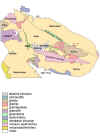
See the geo-map
I made for you

Geology:
Afrikanda is located just southwest of the famous Khibiny massif. It is an
ultrabasic alkaline massif. The ultrabasic rocks cut Archean biotitegneiss and
amphibolite rocks. The Afrikanda massif itself measures only about 1 kilometer
in diameter. It has a zoned structure, meaning the indidual zones form
concentric rings of a different rock type. The outer ring consists of nepheline
pyroxenites, then a ring of fine grained pyroxenites and a ring of coarse grained
pyroxenites. In the center of the massif is a 200 by 100 meter wide area of
calcite-amphibole-pyroxene-rocks. This inner most zone is almost entirely
exposed by an open pit. Inside the calcite-amphibole-pyroxene rock are small
isles of olivinite rock. On the southeast section of the massif is a small
boundary layer of melteigite. Melteigite is a rock related to ijolite (a
nepheline syenite) and contains nepheline and green pyroxene. There are
also alkaline pegmatites and carbonatites.
Afrikanda basically consist od a large quarry, sometimes referred to as the Perovskite
quarry. About 300 meters northeast of these quarry a the so called Schorlomite
tenches. Small exploiration pits where nice Schorlomite can be found.
Mineralogy:
Aegirine Ancylite-(Ce) Baddeleyite Burbankite-(Ce) Cafetite
Calcio-Ancylite-(Ce) Calcite Calzirtite Cancrinite Cerite-(Ce) Diopside
Fluoroapatite Forsterite Goethite Harmotome Ilmenite Kassite Lamprophyllite
Lizardite Loparite-(Ce) Lueshite Magnesiohastingite Magnetite Natrolite
Perowskite Phlogopite Prehnite Pyrochlore Rutile Schorlomite Titanite
Vermiculite Vesuvianite Zirkelite Zirkonolite-3T/2M
 Calcioancylite-Ce |
 Cerite |
 Magnetite |
 Perovskite |
 Titanite |
 Zirconolite |
O.F. Tuttle and J. Gittins, 1966, Carbonatites, p503
S.N. Britvin et al, Mineralogical Excursions on the Kola Peninsula, World of
Stones5-6/1995, p57-57
S. Staude, Perowskit aus Afrikanda, Halbinsel Kola Rußland, Lapis 11/2005,
p41-43
geology
Aivar is a gold deposit related to the banded iron formation of Olenogorsk
(Central Kola terrane). The gold itself occurs very finely dispersed in quartz
veins in iron bearing quartzite.
mineralogy
Arsenopyrite Chalcopyrite Gold Molybdenite Pyrite Quartz
geology
Alakurti is located close to the border with Karelia. It is a
complex of granite-pegmatites.
mineralogy
Albite Allanite-(Ce) Beryl Beyerite Bismuth Cookeite Fergusonite-(Y)
Ferrocolumbite Fluoroapatite Gahnite Microcline Monazite-(Ce) Muscovite Quartz Spessartine
Wittichenite Yttrobetafite-(Y) Yttropyrochlore-(Y) Zircon
geology
Allarechenskoye is located near Pirechnyi settlement in northwest Kola. It is
a copper nickel deposit, south of the Nikel-Pechenga deposit. Actually
Allerechenskoye is an ore field with two individual deposits, Allarechensk and
Vostok. The country rock is Archean gneiss of the Tersk-Notozero anticlinorial
zone. In these gneisses are several proterozoic ultrabasic intrusions. Most of
them are barren, but there are few nickel bearing intrusions of metaperidotite (serpentinized
Harzburgites). .
mineralogy
Bornite Chalcopyrite Cubanite Ilmenite Mackinawite Magnetite Millerite Parkerite
Pentlandite Pyrite Pyrrhotite Sphalerite Violarite
Ore Deposits of the USSR, V.I. Smirnov, 1977, Vol II, pp 22-25
The White Tundra is located southeast of the Lovozero massif. The locality consists of quartenary kimberlitic places. And yes rockhounds, the first diamond has allready been found!
geology
The Bol'shaya Varaka is a Chromite/PGM deposit in the Imandra layered
complex.
mineralogy
Bowieite Braggite Chromite Cooperite Daomanite Edenite Erlichmanite
Hollingworthite Isoferroplatinum Laurite Magnesiohoornblende Phlogopite Pyrite
Skaergaardite Sperrylite Talc Tetraferroplatin Tulameenite
A.Y. Barkov and M.E. Fleet, (2004) An unusual association of hydrothermal platinum-group minerals from the Imandra layered complex, Kola Peninsula, Northwestern Russia, CanMin Vol 42 No2. p455-467
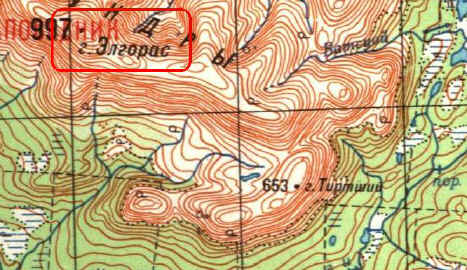
geology
Located in the Salnye Tundry, which is roughly half way the line Kovdor-Murmansk.
It is a granulite deposit
mineralogy
Almandine Biotite Chlorapatite Diopside Enstatite Kaliumpargasite Marialite
Potassium-Chloropargasite
Ermakovskoye can very well be the answer to the question "Kola diamonds?". For years I read sketchy reports that diamonds where found on Kola, but an exact locality was never given. Since diamonds are occuring in northern Finland, I always assumed that Kola diamonds are most likely in the Kovdor region. This is not true. So far most (really small sub millimeter) diamonds are found in placers in the southern and southeastern parts of the peninsula. By reconstructing old riverbeds and streams on Kola and on the bottom of the White Sea a picture starts emerging and the kimberlite pipes of Ermakovskoye could be the origin of the alluvial diamonds. More investigation is needed.
Fedorovo-Pansky
massif
(Pana intrusion)
geology
The Fedorovo-Pansky massif is also known as the Pana layered complex and is
located on the Pansky Tundry. It consists of a layered gabbro-norite intrusion
with PGM mineralogy.
mineralogy
Arsenopalladinite Cobaltite Gersdorffite Hollingworthite Keithconnite Kotulskite
Melonite Menshikovite Merenskyite Mertieite-II Pentlandite Platarsite Sperrylite
Stillwaterite Telluropalladinite Temagamite
Very little is known about this locality. Fomkin Ruchei is a gold occurrence on the boundary of the Tersky terrane and the Imandra-Varzuga rift. Geology and mineralogy might be similar to Vorgovy.
Similar to Fomkin Ruchei. A still obscure gold deposit on the boundary of the Tersky terrane and the Imandra-Varzuga rift.
The Gremyakha-Vyrmes deposit was discovered in 1996. It is a very rich magnetite-ilmenite titanium ore deposit. Mining has recently commenced and should cover all of Russia's titanium demand!
mineralogy
Aegirine Fluoroapatite Ilmenite Magnetite Pyrochlore
Jona
(Yona)
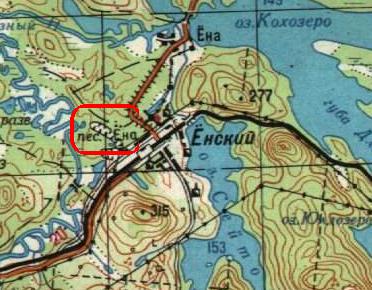
Jona is a small quarry northeast of Kovdor
mineralogy
Almandine Biotite Cyanite Elbaite Microcline Muscovite Oligoclase Sillimanite
Zircon
The Keivy Mountains are located in the heart of Kola, east of Lovozero. The localities in these mountains are discussed separately.
(Chinbiny)
Because Khibiny is one of Russia's richest mineral localities it is discussed on a separate page. Click above to get there.
An obscure gold occurence in the Tersky terrane
Click on the title to go to the Kovdor page.
geology
Kovdozero is something different that Kovdor. It is a small carbonatite
intrusion along the Kola-Karelian borden about half way the White Sea and the
Finish border.
Mineralogy of Carbonatites, Yu.L. Kapustin 1980
Korabl cape
(Mys Korabl)
Korabl cape is located on the Tersky coast about central south Kola. The locality is famous for amethyst
mineralogy
Barite Fluorite Quartz
I only know it is an Almandine locality.
Leshaya is a potential nickel-PGM deposit north of Ozero Lagernoye in the Kholmozero-Voronya belt. It is currently prospected by the Ovoca gold company from Ireland.
http://www.ovocagold.com/
geology
Lesnaya Varaka is situated
not far southeast of Afrikanda. This locality is a carbonatite situated in
precambrian granite gneiss of the Tersky Terrane. The intrusion consists mainly
of olivinites with alkaline dikes and minor alkaline effusive rocks. In the
center are a few carbonatite occurences. The entire northwestside is bordered by
lake Varaka, the otther sides show a rim of fenite.
mineralogy
Cordylite-(Ce) Dolomite Fluoroapatite Gorceixite Ilmenite Lueshite Natroniobite
Perowskite Phlogopite Pyrochlore Quartz Tremolite
Mineralogy of Carbonatites, Yu.L. Kapustin 1980
No this is not a spelling error of Lovozero. Lovnoozero is a nickel deposit. It is located in Archaen basic granulites of western Kola.
Because of Lovozero's richness it is discussed on a separate page. Click above to get there.

A classical silver locality and still the only silver locality on Kola I
know. It is located along Kola's coast between Kandalaksha and Mys Tury.
mineralogy
Acanthite
Barite Calcite Fluorapophyllite Galena Quartz Silver Sphalerite
geology
Meshen is an extention of the Nyalm gold deposits in the Kholmozero-Voronya
belt.
mineralogy
Arsenopyrite Galena Gold Pyrite Pyrrhotite Quartz Silver
See separate Monchegorsk page.
Mys Tury
(Cape Tury)
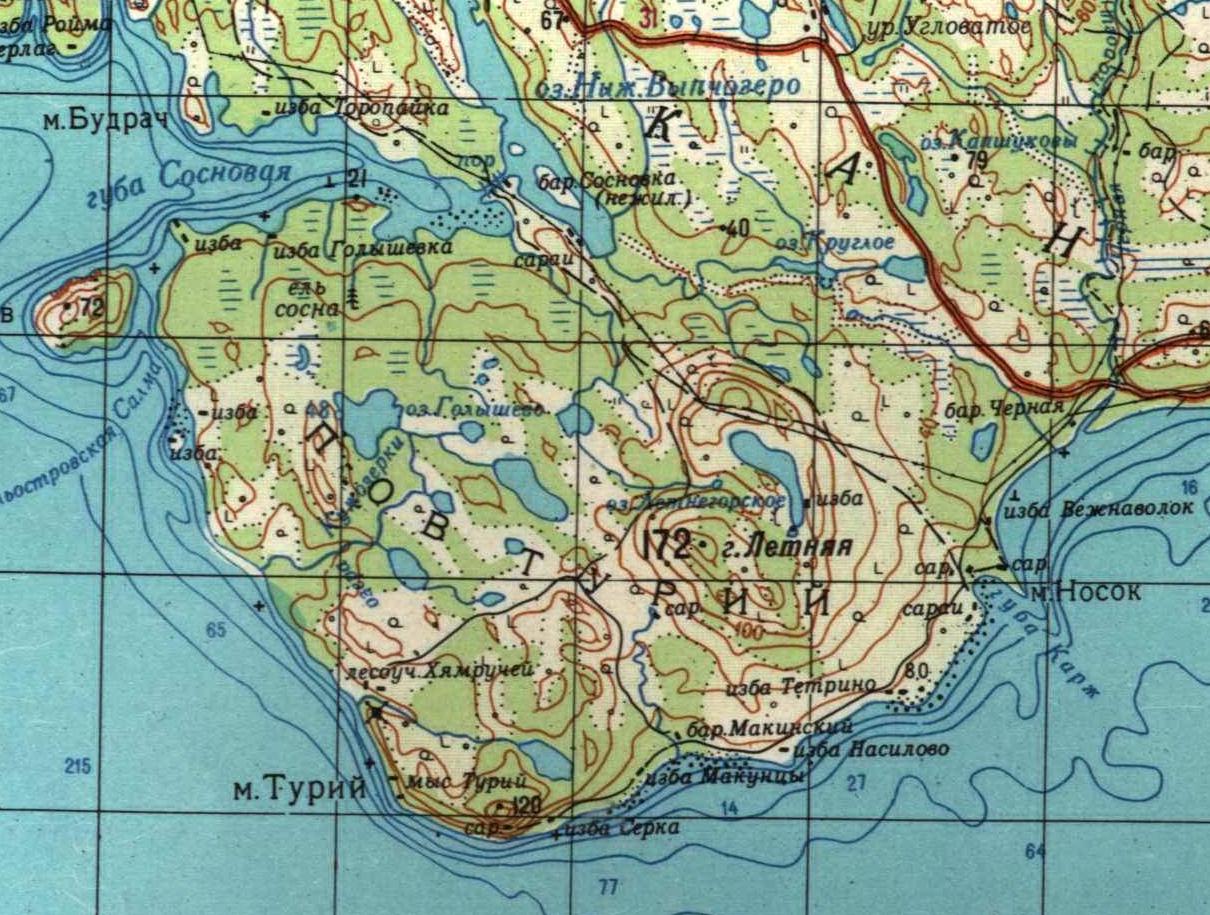
Geology
Mys Tury is a very interesting a locality southeast of
Kandalaksha on the White Sea coast. The country rock consists of
metamorphic granitoids of the Umba complex and Riphean sandstones. These rock is intruded by a melilite rock called
turjaite. The intrusion is very complex and seems to consist of five more or
less rounded intrusions, all coming from the same pluton underneath. The four
major intrusive complexes are named the Tsentralnyel-, Yuzhnyi-, Vostochnyi- and
Kuznavolok complexes. Generally each complex consists of a core of
melilite rocks (turyaite), surrounded by earlier iolite-melteigite. The
Tsentralnye complex has the same general structure, but additional
carbonatite, phoscorite and pyroxenite rocks in the central section, making it
resemble Kovdor. Surrouding
these five intrusions are iolite-melteigites and fenites. At some places inside
the intrusion skarn occurs . Mys Tury was the first known carbonatite discovered
in Russia. The geological feature is known since 1840. In 1924 the rock
turjite was discovered here by Beljankin.THe exact type locality is mentioned as
Serka Bolshaia. The Kuznavolok intrusion is the type locality for
Turjaite rock, Ramsay 1921.
Mys Tury is located in the so called Kandalaksha graben. This graben can be seen
on any map as the stretch of sea popinting from Arkhangelsk to Kandalaksha. The
fact that Kovdor and the Finnish Sokli carbonatites are on the same line is no
coincidence.
At the southern tip of the peninsula are cliffs, cut by approximately 300 dykes.
They consist of various, mostly altered, rocks like alnoeit, lamprophyre (damkjermanite),
granulite, harzburgite and eclogite as well as dykes of rocks more alike the
intrusions such as carbonatite, melilitite, melite-nephelinite and nephelinite.
Mineralogy
Aegirine Akermanite Aliettite Analcime Andradite Augite Barytolamprofyllite
Bazzite Betafite Biotite Bornite Calcite Calzirtite Cancrinite Cebollite Celsian
Cuspidine Diopside Djerfisherite Dolomite Epidote Eudialyte Fedorite
Ferrinyboite Fluorapophyllite Fluorite Fluoroapatite Forsterite Götzenite
Hastingsite Hillebrandite Ilmenite Labuntsovite-Fe Magnetite Melilite
Molybdenite Monticellite Narsarsukite Natrolite Nepheline Noseane Perowskite
Phlogopite Pyrrhotite Quartz Richterite Sacrofanite Schorlomite Spinel
Strontianite Titanite Vesuvianite Wöhlerite Zircon Zirkonolite-3O



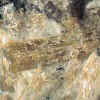

Fluorite
Olivine
Pectolite
Rosenbuschite Schorlomite
references
Alkaline Rocks of the Turiy peninsula, Russia, including type-locality turjaite
and turjite: a review. by K. Bell et al, Canadian Mineralogist Vol34 pp265-280
(1996)
Carbonatites of the Turiy Peninsula, Kola: role of magmatism and of metasomatism,
by Andrei Bulakh et al, Canadian Mineralogist Vol 34 pp403-409 (1996)
Mineralogy of Carbonatites, Yu.L. Kapustin 1980
Follow link for details
A gold deposit in granodiorite or diorite porphyrite in the Kolmozero-Voronja belt.
mineralogy
Arsenopyrite Galena Gold Pyrrhotine Quartz Silver
http://www.ovocagold.com/
geology
Similar to Oleninskoye. A significant gold occurence in the Kolmozero-Voronja
belt. Gold occurs here in sulphidic veins for several kilometers in
komatiite-tholeite rock.
mineralogy
Arsenopyrite Galena Gold Pyrrhotine Silver
http://www.ovocagold.com/
geology
A significant gold occurence in the Kolmozero-Voronja belt. Gold occurs here in
sulphidic veins for several kilometers in komatiite-tholeite rock. Apart from
the gold-sulfide mineralogy there are signs of economical amounts of PGM metals
in the ultrabasic rocks.
mineralogy
Arsenopyrite Galena Gold Pyrrhotine Quartz Silver
http://www.ovocagold.com
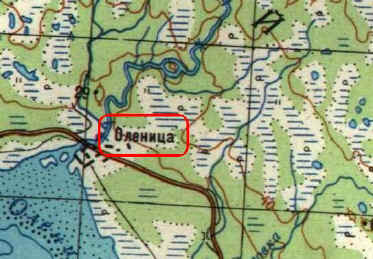
Olenitsa is located on the southern coast of Kola, where the Olenitsa river flows into the White Sea. Olenitsa is the locality of the famous calcite pseudomorphoses after Ikanite.
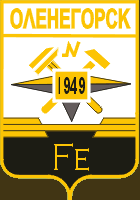
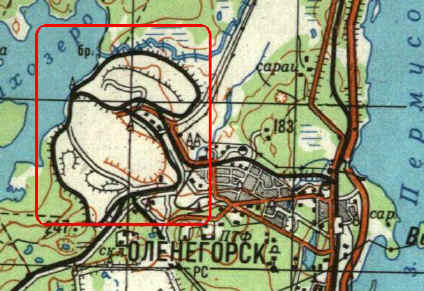
geology
As the coat of arms allready shows, Olenegorsk is an iron mining
town. Olenegorsk is a so called banded iron formation. The deposit consists of a
150 meter thick ferruginous quarztite layer, of about 2.8km in extent embedden
in Archean amphibole bearing gneiss. The deposit show complicated folding and
there are younger granitic intrusions nearby. The ore consists of magnetite and
hematite in a ratio of about 3:1 with minor minerals as stated below. There is a huge open pit
west northwest of town.
mineralogy
Actinolite Calcite Chalcopyrite Cummingtonite Epidote Hematite Magnetite Pyrite
Pyrrhotite Sepiolite Siderite Tremolite
Ore Deposits of the USSR, V.I. Smirnov, 1979, part 1 pp106-108
Orlovsky cape
(Mys Orlovsky)
Orlovsky is located about 25km north of the mouth of the Ponoi river on Kola's eastern shore. The Quartz occurs here as Morion and Amethyst.
mineralogy
Covellite Quartz
geology
Ozernaya Varaka is a small circular alkaline intrusion, located between
Afrikanda and the Khibiny massif, not far from Apatity. The complex has a
diameter of about 1km and intruded into Archean gneiss. The outer 10 to 600
meters of the intrusion consist of fenite contact rocks. Inside this zone is an
incomplete zone of ijolite. The center of the intrusion consists of alkali
pyroxenite. In the ijolite and alkali pyroxenite lay smaller bodies of
melteigite. The ijolite zone also contains very small urtite bodies. At some
places the ijolite contains more feldspar and gradually grades into nepheline
syenite. Cancrinite syenite, mica syenite and carbonatite rocks form dykes
within the complex.
mineralogy
Aegirine Albite Biotite Calcite Cancrinite Magnetite Nepheline Pectolite
Pyrochlore Quartz Titanite Wollastonite Zircon
O.F. Tuttle and J. Gittins, 1966, Carbonatites, p502
Mineralogy of Carbonatites, Yu.L. Kapustin 1980
geology
Pechegubskoye is a gold deposit related to the banded iron formation of
Olenogorsk (Central Kola terrane). The gold itself occurs very finely dispersed
in quartz veins in iron bearing quartzite.
mineralogy
Arsenopyrite Chalcopyrite Gold Molybdenite Pyrite Quartz
Geology
Pesochnyi is located just south of the Keivy mountains, somewhere close to the
border of the Keivy and Tersky terranes. It is an irregular shaped carbonatite
intrusion, consisting mainly of pyroxenites with carbonatized rocks in the
center and olivinites. The intrusion is situated in gabbro but borders
Proterozoic sandstones in the north.
Mineralogy of Carbonatites, Yu.L. Kapustin 1980
An interesting locality with promising geology. A Au-Cu-Mo deposit formed in metasomatically altered quartz porphyry of the Kolmozero-Voronja belt. The deposit measures roughly 500 x 300 meters. Should be quite interesting mineralogy! Pellapakh is located about 10km northwest of Vasin Mylk
Rikolatva is a locality in the Jona area, not far from Kovdor.
mineralogy
Allanite-(Ce) Fluoroapatite Kyanite Microcline Monazite-(Ce) Muscovite Schorl
geology
Salmagorsk is situated
south of Khibiny, about 1/3 on the line Khibiny, Mys Tury.
It is a carbonatite intrusion, consisting mainly of ijolite, with minor
turgite, olivinite, carbonatites and alkaline dike rocks. There is a large
fenite zone around the intrusion.
Mineralogy of Carbonatites, Yu.L. Kapustin 1980
geology
Seblyavr is an alkaline ultrabasic intrusion comparable to Kovdor. It is located
along the Tuloma river, southwest of Murmansk. The intrusion is embedded in the
gneisses and migmatites of the archaen Kola terrane. The intrusion is as the
intrusion of Kovdor very complex. It consists mainly of clinopyroxenites
and apatite-garnet-clinopyroxenites. Around them is a zone of
nepheline-clinopyroxenite and there are small areas with ijolites. The whole
intrusion is littered with carbonatites, phoscorites and
apatite-phlogopite-diopside rocks. Around the enrtire intrusion is a fenite
contact aureole,
mineralogy
Because of the resemblance with Kovdor I expect many more yet undiscovered
minerals occur at this locality! Seblyavr was discovered in the late 1960s
Anatase Ancylite-(Ce) Andradite Ankerite Bornite Calzirtite Dolomite Fluoroapatite Forsterite Ilmenite Lueshite Perowskite Pyrite Quartz Strontianite Tetra-Ferri-Phlogopite Titanite Vigezzite
All I know is that it is a promising gold deposit in the central Kola terrane.
mineralogy
Gold and Pyrite
geology
Vorgovy is a gold occurence on the boundary of the Tersky terrane and the
Imandra-Varzuga rift. The host rocks are chlorite-biotite-muscovite schists of
the Kislogubskaya formation. Gold occurs here in sulphidic veins.
mineralogy
Arsenopyrite, Galena, Gold, Hessite, Pyrite, Pyrrhotine, Rucklidgeite,
Sphalerite.
Hessite and Rucklidgeite are found in veins northeast of Vorgovy. These veins are not yet fully investigated
Voronyi Tundry is located north of the Lovozero massif. It is situated in the Kholmozero-Voronyi belt. This belt consists of gneiss, amphibolite and komatiite. Inside the Kholmozero-Voronyi belt are three types of localities close together. The two pyrphyritic Cu-Mo-Au deposits, Pallapahk and Leshaya are discussed eslewhere on this page. The second group consists of the gold deposits, Oleninskoye, Nyalam en Meshen are also discussed elsewhere. Left are four LCT pegmatites. It seems that so far all minerals on the market labeled as comming from Vorinyi Tundry or from Kholm Ozero are from one of these four pegmatites. They are Okhmylk, Vasin Mylk, Mylk and Polmosttundry. The first three localities are located withing 10km from eachother, while Polmosttundry is located about 15km to the southwest.
mineralogy
(including sublocalities)
Albite Alumotantite Amblygonite Arseniosiderite Bavenite Calciotantite
Cesstibtantite Chalcophanite Childrenite Cookeite Elpidite Eosphorite Eucryptite
Fairfieldite Ferrotapiolite Fluoroapatite Garronite Holmquisite Holtite
Jahnsite-CaMnFe Jahnsite-CaMnMn Kingsmountite Kolfanite Laueite Lepidolite
Lithiophyllite Lun'okite Mangangordonite Manganosegelerite Manganotantalite
Messelite Microlite Milarite Mitridatite Montebrasite Muscovite Natrotantite
Petalite Pollucite Purpurite Quartz Rubicline Scheelite Simpsonite Sosedkoite
Spodumene Stannomicrolite Stibiotantalite Tantite Voloshinite Wodginite
Xenotime-(Y) Zircon
 Cesstibitantite Simpsonite |
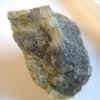 Holtite |
 Voloshinite |
mineralogy
Ferrimolybdite Fluorite Molybdenite Monazite-(Ce) Muscovite Pyrite Quartz Topaz
geology
Zheleznaya Varaka is a gold deposit related to the banded iron formation of
Olenogorsk (Central Kola terrane). The gold itself occurs very finely dispersed
in quartz veins in iron bearing quartzite.
mineralogy
Arsenopyrite Chalcopyrite Gold Molybdenite Pyrite Quartz
References
Gold in the Archean supracrustal and intrusive complexes of NE Fennoscandia, by B.V. Gravilenko
Diamondiferous placers from northeast baltic shield, by B.V. Gravilenko